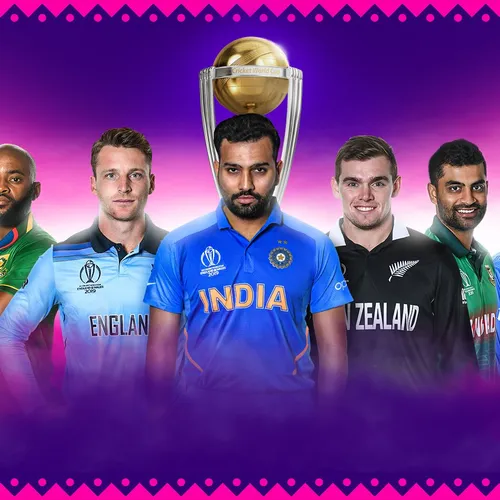
How To Teach Cricket To Kids & Beginners
August 20, 2023
Lord’s cricket ground: the mecca of the sport
August 28, 2023To the absolute beginner, the scoring on cricket can look incredibly complicated and even intimidating.
Whether it’s a village cricket match or a professional, international test match, there needs to be a record kept of the cricket score for all cricket clubs. This is the job of the “scorer” or “scorers” in some cases – using a cricket scorebook.
In this guide, we’re going to take you through some of the very basics, such as how runs are actually scored in cricket, the system used by the umpires to signal the runs, and of course, how to actually read and understand the cricket scores.
Cricket Scoring Explained
As a viewer, the first time you turn on the cricket there can be some confusion about what the scores mean, added to the fact that there is a team score, you also see the score of individuals taking part. Bowlers and batters get their own individual score figures from the day.
The very basic principle of cricket is that out of two teams of 11 players, both are trying to score more runs than their competitor, either before all of the wickets are taken by the other team and there are no batters left, or in an allocated number of deliveries. It gets more complicated than that, but this is a basic overview.
What Cricket Scores Mean
Cricket scores are presented as two figures. The number of runs scored, and the number of wickets that have been taken. These are separated by a “/” or a “-” symbol.
Let’s say you turn on the cricket and New Zealand are batting. The score is 192/8.
What does this actually mean? Well, the first number is the number of runs that have been scored (more on this shortly) and the second number is the number of wickets taken. New Zealand have scored 192 runs, and eight batters have been given “out”.
Our recent guide explains ten ways in which the batters can be out, meaning their role in that innings is complete.
When we get to 10 wickets and the final batter doesn’t have a partner, the team is “all out” meaning that their scores have been completed. New Zealand’s score may go from 192/8 to 195/9 and then 210 all out.
Let’s say New Zealand then have to bowl, and the opposition team is Sri Lanka. Sri Lanka score 100/0, meaning for the first 100 runs no wicket is taken. The score then moves to 150/3, and finally to 193/4. This means that there are six wickets left, and in a single innings game, it means Sri Lanka have won by six wickets.
If Sri Lanka had been all out for 180 in this example, then New Zealand would have won by 12 runs.
How Runs Are Scored
To fully understand how cricket scoring works, you need to understand the ways in which runs are scored.
Running
Hit the ball, and run. If you can find gaps in the field and call run to your partner, both batters must run to the other end to complete a run. You can run as many times as you wish, scoring one run for every time you successfully cross with your partner and make it to their crease, touching down in the crease with your foot or your bat.
It’s rare to score more than three runs in this way as the fielding team will have usually returned the ball easily in this time. Remember that if you don’t get to the opposing side before the fielding team returns the ball and strikes your wicket with the ball, you can be given as out. This is called a run-out and is one of the methods of dismissal. Even the non-striker can be run out.
Boundaries
Cricket is played within a boundary rope. If the batter hits the ball all the way to, or past, the boundary rope, they will also score runs in the form of a “4” or a “6”.
Four runs are added when the ball bounces or rolls on the way to the rope, but makes it past the boundary.
Six runs are added when the ball gets over the boundary rope without being caught by a fielder.
There are plenty of batters who scored a huge percentage of their runs in boundaries, if you were to watch Chris Gayle late in his career, it was rare that he would choose to run.
When a four or a six is scored, the umpire will make a signal to the scorers to tell them to note this on the scorecard.
In both boundaries and runs, they are awarded to the batter who hit the ball.
Extras
Scorecards also have space for “extras”.
Runs can sometimes be scored even though the ball didn’t hit the bat. These are usually known as extras.
Fielding extras are things like byes and leg byes, this means that the batter didn’t hit the ball, but still managed to run. For instance, if the ball hit their leg and went far enough that they were able to complete a run.
Wide balls and no balls will also result in extra runs being added to the batting team’s total. A wide ball will have to be bowled again, but it also adds a run to the total.
Other rules may see additional runs added to the total. Slow over rates or illegal fielding actions, or running in the wrong part of the wicket, can be met with penalty runs.
Individual Scoring
Cricketers have an individual score in the match, too.
For a batter, it is relatively simple. The score is how many runs they managed to score off the bat, both in running between the wickets and by scoring boundaries. A batter may score 0 or they may score 400 (in very rare instances).
Bowling scores are a little more complex and again are presented in the format of two numbers.
Let’s say you turn on the cricket and see that Sam Curran is bowling and has a score of 3/27.
In this instance, the wickets are represented as the first number (they are more interesting to the bowler anyway) and the second number is the runs conceded off that bowler.
3/27 means the bowler has taken three wickets, but they have gone for 27 runs in the process.
These are the very basics of scoring, and when it comes to professionally scoring cricket, things like the number of overs bowled, the number of balls each batter has faced, this is all recorded for the scores. It’s amazing how much data is actually generated during the playing of the game.
Cricket Scorebooks or Scorecards
Like the umpires of the game, scorers have to know a lot about the sport, and they have a crucial role to play when it comes to all this record keeping.
In the professional game, there are at least two scorers allocated in a match, who will both do the job of collecting the score based on what the umpire signals to them. Scorers’ opinions do not matter, it is all a record-keeping exercise. What the umpire says goes.
The laws of cricket are clear on the issue of accepting the signal of the umpire.
“3.3 Acknowledging signals
The scorers shall accept all instructions and signals given to them by the umpires and shall immediately acknowledge each separate signal.”
The laws of the game also ensure that the scorers are regularly checking to ensure their recording of the game is the same.
“3.2 Correctness of scores
The scorers shall frequently check to ensure that their records agree. They shall agree with the umpires, at least at every interval, other than drinks intervals, and at the conclusion of the match, the runs scored, the wickets that have fallen and, where appropriate, the number of overs bowled. See Law 2.15 (Correctness of scores).”
What a Scorecard Looks Like
Check out this image below of a cricket scoring book. It is a completed scorecard from a match between Australia and England from 1994.
You can see how complex the scoring system (known as cricket scoring notation) can actually get, but all the data needed is kept on this sheet. You can see the names of the batters and how many runs they scored, the wickets taken by the bowlers and how many runs they conceded, even the boundaries.
Next to each batter is a collection of the numbers of runs scored in consecutive balls. Where the batter doesn’t score, you will see that the scorer puts a dot. This represents that a ball was delivered, but no run was actually scored.
This is one of those terms that has made its way into cricket language. You will often hear the commentators talk about a “dot ball” during the game, meaning the batter didn’t manage to score any runs. In short formats, dot balls are precious.
A Note on Averages
All of this data is really important in the world of cricket, and especially at a professional level.
Data is collated through the seasons and goes to make up an “average” for each player. This is a great way of tracking the quality a player has or the form they are in.
For instance, a batter’s average is how many runs they are scoring per innings, on average, before they get out. It can be hard to keep track, and the statisticians have their work cut out, especially because of the fact that a batter may not get out at all, they may still be at the crease when the match ends.
Don Bradman, largely accepted to be the best batter of all time, ended his career with an average of 99.94. This is unlikely to ever be surpassed, but among the highest averages in cricket today are batters like Steve Smith and Joe Root.
The Verdict: Understanding Cricket Scoring
Cricket scoring is not easy to understand just from reading a short guide. It helps to get a basic knowledge and then to watch some cricket, and you will start to understand from the live scorecards what a lot of the figures actually mean.
There are also other symbols that are used sometimes, such as the “dec” when a team declares, or a “f/o” if the follow on has been enforced. Cricket is a nuanced and fascinating sport, and that’s why we love it, but it also means that you may take a while to pick up all of the different aspects of the game.



